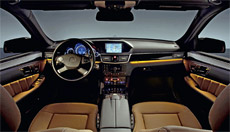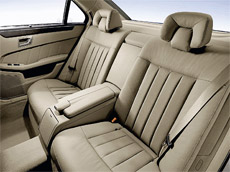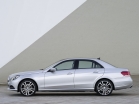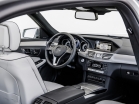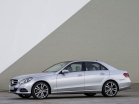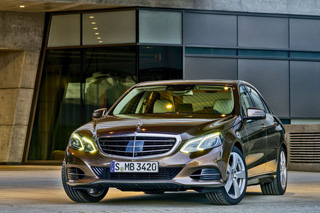Test drive Mercedes Benz E-class w212 2013-NV sedan
New edition
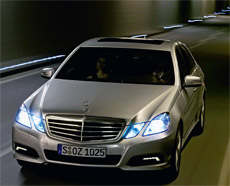 Mercedes-Benz presented a new version of the E-class car. Experts expect that the model will become a standard in its segment in such the most important parameters as comfort, security and environmental friendliness.
Mercedes-Benz presented a new version of the E-class car. Experts expect that the model will become a standard in its segment in such the most important parameters as comfort, security and environmental friendliness. The new Mercedes-Benz E-class is equipped with unique technical means that help the driver efficiently and safely drive a car. Among them, for example, the system of monitoring the degree of fatigue of the driver, the device of adaptive control of the head light and the automatic full braking system activated with the direct threat of the accident.
Comfortable, which is the traditional line of E-class cars, in the new sedan, the efforts of Mercedes-Benz specialists are raised to a higher level, and primarily due to the advanced structure of the body (its rigidity is increased by 30%), optimized seats and a re-developed suspension, whose shock absorbers automatically adapt to a real road situation. The air suspension proposed as an option operates in combination with a smoothly working damping system adjustable using electronics.
The same outstanding characteristics of this E-class sedan as safety and comfort are its environmental parameters, as well as efficiency: 4- and 6-cylinder engines with direct injection are used 23% of fuel less than before.
The new CDI diesel units spend only 5.3 liters of fuel per 100 km of path (European mixed cycle), which corresponds to 139 g of carbon dioxide per 1 km of path. All engines developed for the car satisfy the ecological standard of Euro-5, and the E 350 Bluetec model has even less maximum permissible Euro-6 norms, which should enter into force only in 2014.
In addition to the unique properties of engines, the BlueEfficency package, provided for E-class cars, also contributes to a significant fuel savings. The engineers of all development divisions of the company have optimized the parts, components and components of the model, so that, due to the reduction of mass, change of shape, improve the functions and effective regulation of energy consumption, reduce fuel consumption. So, for example, the aerodynamic resistance coefficient was reduced to 0.25. This is the best result in the world among all sedans of the highest segment. Thus, Mercedes E-class
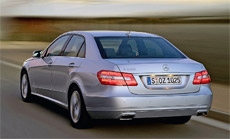 i improved the indicator of its predecessor by 4%, which in practice is expressed in saving approximately 0.25 liters of fuel at a cruising speed of 130 km/h. Aerodynamics were optimized in particular through the use of adjustable fan blinds that provide air supply to the motor compartment as necessary.
i improved the indicator of its predecessor by 4%, which in practice is expressed in saving approximately 0.25 liters of fuel at a cruising speed of 130 km/h. Aerodynamics were optimized in particular through the use of adjustable fan blinds that provide air supply to the motor compartment as necessary. Other components of the BlueEFFICIENCY package, among other things, include new tires, the rolling resistance of which is reduced by 17%, optimized from the point of view of energy consumption, the generator control, fuel pump compressor and the steering mechanism with a hydraulic power steering, as well as the ECO start-line, turning the engine of the latest E200CGI car when it goes into idle mode. The speedometer display informs the driver about the current fuel consumption and the moment, when, from the point of view of more economical and environmentally responsible driving, the following transmission should be included.
The line of power units of the E-class consists of 4, 6- and 8-cylinder units with a capacity of 100 kW/136 hp. up to 386 kW/525 hp.; 4-cylinder engines with direct injection, despite the smaller operating volume, give out greater power and a larger torque than 6-cylinder V6 engines of the previous version.
